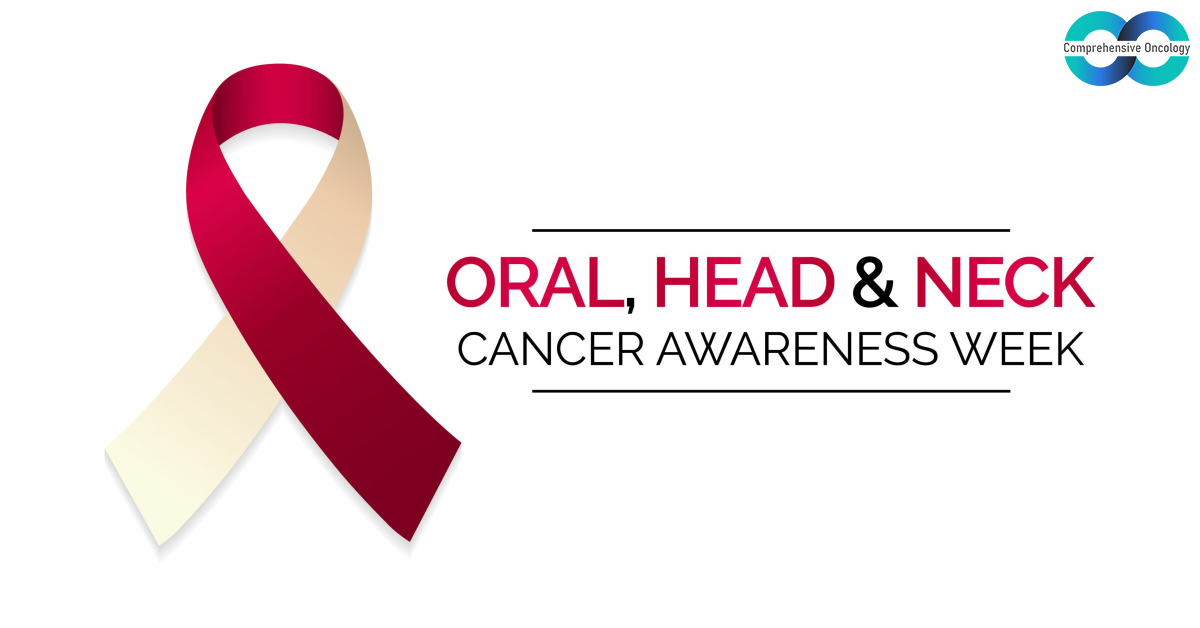- Mon-Sat (9am - 5pm)
- Aditi_aggi@yahoo.com
- +91-7982047515

April is National Oral, Head, and Neck Cancer Awareness Month, a time dedicated to raising awareness about these often overlooked but significant forms of cancer. This month, let's delve into the essential aspects of oral, head, and neck cancer, including their symptoms, causes, and treatment options, with insights from the World Health Organization (WHO) statistics.
Oral, head, and neck cancers encompass a group of cancers that affect various parts of the head and neck region, including the mouth, throat, larynx, nasal cavity, sinuses, and salivary glands. According to the National Cancer Institute (NCI), approximately 70,000 people in the United States are diagnosed with head and neck cancers each year.
Recognizing the symptoms of oral, head, and neck cancer is crucial for early detection and improved outcomes. Some common symptoms include:
Several factors can increase the risk of developing oral, head, and neck cancer. These include:
Treatment for oral, head, and neck cancer depends on various factors, including the type and stage of the cancer, as well as the individual's overall health. Treatment modalities may include:
According to the International Agency for Research on Cancer (IARC), head and neck cancers are the seventh most common cancer worldwide, with approximately 890,000 new cases and 450,000 deaths annually. These cancers predominantly affect men, with tobacco and alcohol use being the primary risk factors. However, the incidence of HPV-related head and neck cancers is on the rise, particularly among younger individuals.
National Oral, Head, and Neck Cancer Awareness Month serves as a reminder of the importance of early detection, awareness, and prevention strategies. By familiarizing ourselves with the symptoms, causes, and treatment options for these cancers, we can empower ourselves and our communities to take proactive steps towards prevention and early intervention.
Let's join together to raise awareness, support those affected by oral, head, and neck cancer, and work towards a future where these diseases are no longer a significant threat to public health. Together, we can make a difference in the fight against oral, head, and neck cancer.
Dr. Aditi Aggarwal has worked in radiation oncology for ten years, treating patients with thoracic cancer, gastrointestinal cancer, bone and soft tissue cancer, gynecological cancer, breast cancer, and neurological cancers.
As a medical doctor, Dr. Aditi Aggarwal holds an MBBS degree from Lady Hardinge Medical College Delhi, a MD degree in radiation oncology from VMMC and Safdarjang Hospital Delhi, as well as a post-doctoral diploma in cancer research from Catalyst Clinical Sciences in Pune.
Cancer is usually classified into four stages, with stage 0 being the earliest stage and stage IV being the most advanced. The stage of a cancer is an important factor in determining the prognosis and the best treatment options. Here's a brief overview of the different stages of cancer:
Stage 0: This is the earliest stage of cancer, and it refers to cancer that is still in its original place and has not spread to other parts of the body. It is also known as carcinoma in situ.
Stage I: This stage means that the cancer is still small and has not spread to other parts of the body. It may be treatable with surgery or other local treatments.
Stage II: At this stage, the cancer is larger and may have spread to nearby lymph nodes. It may be treated with surgery and/or radiation therapy, or other systemic treatments such as chemotherapy.
Stage III: This stage means that the cancer has spread to nearby tissues or organs and/or to distant lymph nodes. Treatment may involve a combination of surgery, radiation therapy, and/or systemic treatments such as chemotherapy.
Stage IV: This is the most advanced stage of cancer, and it means that the cancer has spread to other parts of the body, such as the liver, lungs, bones, or brain. Treatment at this stage is typically palliative, meaning that it aims to relieve symptoms and improve quality of life, rather than cure the cancer.
It's important to note that the staging of cancer can vary between different types of cancer and different systems used to classify the stages. Your healthcare provider can give you more information specific to your situation.
There is no single vaccine that can prevent or cure all types of cancer. However, some vaccines can help prevent certain viral infections that can increase the risk of certain cancers, such as the human papillomavirus (HPV) vaccine, which can help prevent HPV-related cancers such as cervical, vaginal, vulvar, and anal cancer.
Additionally, some cancers can be treated with a type of immunotherapy called cancer vaccines, which help stimulate the body's own immune system to recognize and attack cancer cells. These vaccines are still in the experimental stage and are only available through clinical trials.
However, there are many things you can do to reduce your risk of developing cancer, such as eating a healthy diet, maintaining a healthy weight, avoiding tobacco products, and getting regular cancer screenings. Your healthcare provider can give you more information on how to reduce your risk of cancer.
The symptoms of cancer can vary depending on the type and part of the body of cancer, as well as its stage. Some common symptoms of cancer include:
It's important to keep in mind that these symptoms can also be caused by other conditions, and not all of them are present in all cases of cancer. If you are experiencing any symptoms that are new or persist for a long time, it's important to talk to your healthcare provider to determine the cause and get appropriate medical attention. Early detection and treatment of cancer can often lead to better outcomes.
Through us, you can schedule a Dr. Aditi Aggarwal priority appointment. Request a callback or dial 7982047515 to reach us.